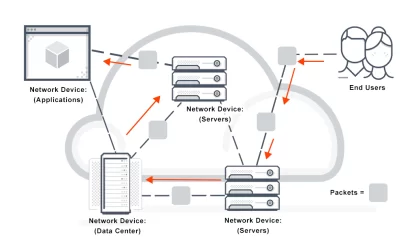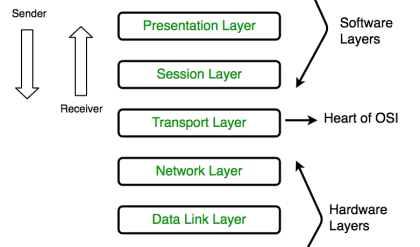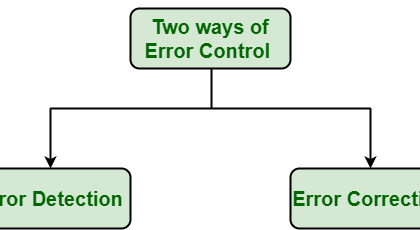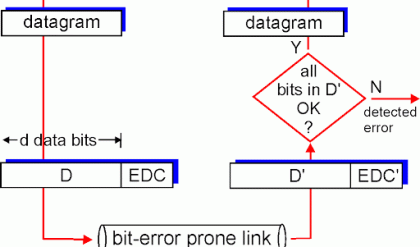Definition
Multiplexing is used for the transmission of a plurality of information channels over a single transmission medium. An information channel may be a telephone voice channel, data channel, or a channel carrying image information. Our discussion below will concentrate on a telephone channel. A telephone channel is a channel optimized for carrying voice traffic, in this case the voice of a single telephone user. We will define it as an analog channel with occupying the band of frequencies between 300 and 3400 Hz (CCITT/ITU-T definition).
Before launching into our discussion, keep in mind that all multiplex equipment is four-wire equipment. If we look at one side of a circuit, there will be a multiplexer used for transmission and a demultiplexer used for reception.
The number of channels that can be multiplexed on a particular circuit depends on the bandwidth of the transmission medium involved. We might transmit 24 or 48 or 96 channels on a wire pair, depending on the characteristics of that wire pair. Coaxial cable can support many thousands of voice channels; line-of-sight microwave radio is capable of carrying from several hundred to several thousand voice channels. A single fiber-optic thread can support literally tens of thousands of channels. A communication satellite transponder can carry between 700 and 2000 such voice channels, depending on the transponder’s bandwidth.
There are essentially two generic methods of multiplexing information channels:
1. In the frequency domain; we call this frequency division multiplex (FDM).
2. In the time domain, which we call time division multiplex (TDM).
The concepts of frequency division multiplexing are discussed in this chapter. Time division multiplexing (pulse code modulation).
Frequency Division Multiplex
Introduction
With FDM the available channel bandwidth is divided into a number of nonoverlapping frequency slots. Each frequency slot or bandwidth segment carries a single information-bearing signal such as a voice channel. We can consider an FDM multiplexer as a frequency translator. At the opposite end of the circuit, a demultiplexer filters and translates the frequency slots back into the original information bearing channels. In the case of a telephone channel, a frequency slot is conveniently 4 kHz wide, sufficient to accommodate the standard 300- to 3400-kHz voice channel. Figure 4.17 illustrates the basic concept of frequency division multiplex.

In practice, the frequency translator (multiplexer) uses single sideband modulation of radio-frequency (RF) carriers. A different RF carrier is used for each channel to be multiplexed. This technique is based on mixing or heterodyning the signal to be multiplexed, typically a voice channel, with an RF carrier.
An RF carrier is an unmodulated RF signal of some specified frequency. In theory, because it is not modulated, it has an indefinitely small bandwidth. In practice, of course, it does have some measurable bandwidth, although very narrow. Such a carrier derives from a simple frequency source such as an oscillator or a more complex source such as a synthesizer, which can generate a stable output in a range of frequencies. A simplified block diagram of an FDM link is shown in Figure 4.18.
Mixing
The heterodyning or mixing of signals of frequencies A and B is shown as follows. What frequencies may be found at the output of the mixer? Both the original signals will be present, as well as the signals representing their sum and their difference in the frequency domain. Thus at the output of the illustrated mixer we will have present the signals of frequency A, B, A + B, and A − B. Such a mixing process is repeated many times in FDM equipment.
Let us now look at the boundaries of the nominal 4-kHz voice channel. These are 300 Hz and 3400 Hz. Let us further consider these frequencies as simple tones of 300 Hz and 3400 Hz. Now consider the following mixer and examine the possibilities at its output:

Now imagine that instead of two frequencies, we have a continuous spectrum of frequencies between 300 Hz and 3400 Hz (i.e., we have the voice channel). We represent the spectrum as a triangle:


This is called an inverted sideband. To review, when we take the sum, we get an erect sideband. When we take the difference, frequencies invert and we have an inverted sideband represented by a triangle facing left.
Again, this modulation technique is called single-sideband suppressed carrier (SSBSC). It is a type of amplitude modulation (AM). With conventional AM, the modulation produces two sidebands, an upper sideband and a lower sideband, symmetrical on either side of the carrier. Each sideband carries the information signal. If we tune to 870 kHz on the AM dial, 870 kHz is the frequency of the RF carrier, and its sidebands fall on either side, where each sideband is about 7.5 kHz wide. Thus a radio station on the AM dial requires about 15 kHz of spectrum bandwidth.
In our case, there are also two sidebands extending about 3.4 kHz either side of the carrier frequency. Of course, the carrier frequency is the local oscillator frequency, which is suppressed at the output, as is the upper sideband. All that remains is the lower sideband, which contains the voice channel information.





